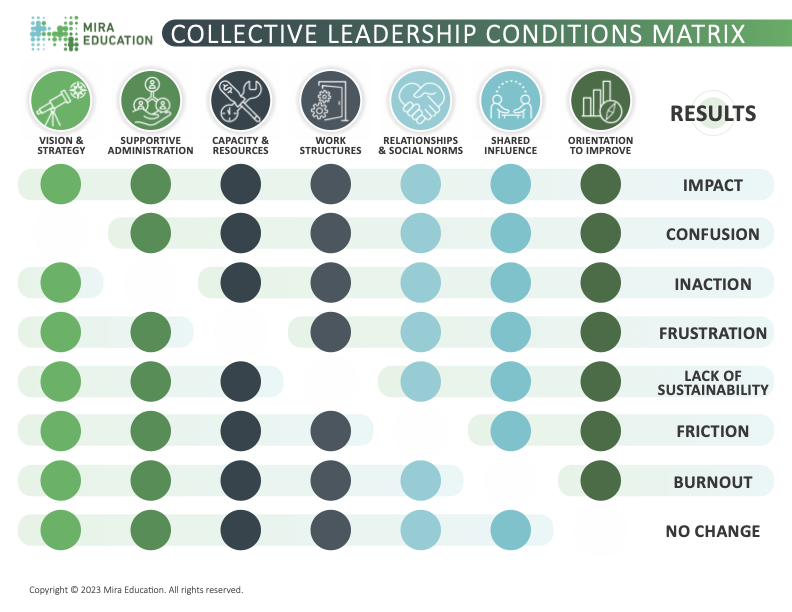This blog is part of our Unlocking Collective Leadership: 7 Conditions for Lasting Impact series, highlighting the conditions that help P20 systems move from individual effort to shared leadership.
Why Shared Vision and Strategy Matter
A vision statement on a poster doesn’t mean much unless the people doing the work helped write it. In collective leadership, how we build a vision matters just as much as what it says.
As Margaret Wheatley put it, “No one is successful if they merely present a plan in finished form to others…” That’s why one of the core conditions of collective leadership is co-created vision and strategy. Let’s explore what that looks like in action.
What is Vision and Strategy?
Vision and Strategy comprise the first condition of collective leadership. It’s the shared North Star that guides a team’s decisions, priorities, and daily work.
In collective leadership, this means:
- Co-created: Developed collaboratively by the full team, across roles and titles
- Clearly defined: Specific enough to inform decisions and drive alignment
- Communicated and lived: Used consistently to shape culture, strategy, and practice
When teams get this right, everyone knows where they’re headed—and how they’ll get there together.
One school that embraced this condition early in its collective leadership journey is Dr. Rose Wilder Elementary School, where clarity of vision laid the foundation for deeper collaboration and stronger results.

Vision and Strategy in Practice
While few teams have the authority to craft a new vision statement for their school or district, all should have the opportunity to define what the vision means for their team in their current time and context. As a result, they’re more likely to have the chance to develop the strategy intended to meet the goals aligned with the vision.
Take Dr. Rose Wilder Elementary in Clarendon County. When two schools merged, the leadership team knew they couldn’t just graft one school’s identity onto another. Instead, they needed to create something new, together. So they approached the moment with intention:
- They set a mindset across the community: We’re building a new school,
- School leaders met one-on-one with staff from the former Summerton school to learn what was working and what needed attention,
- Committed to preserving effective practices while addressing persistent pain points, and
- Opened up the conversation, hosting family town halls to share transparently and invite feedback.
This wasn’t vision on paper. This was vision lived out loud. And the results spoke volumes: for the first time ever, Dr. Rose Wilder earned an Excellent rating on the state report card.
When vision is co-created and strategy is shared, results don’t just improve; they stick.
Turning Vision and Strategy Into Shared Action
Most teams don’t need a new vision. They need a shared one. Whether you’re launching a new initiative, tackling a persistent challenge, or navigating change, co-creating vision and strategy helps your team move in the same direction.
Gather the team and start here:
- What is our team currently working on, or something coming up, that could benefit from a co-created vision and strategy?
- If this effort we are currently working on were wildly successful, what would you see, hear, think, and say?
- What are the next three to five action steps to make the shared vision a reality?
- What can each team member contribute to ensure the wildly successful vision is realized?
- What resources and/or supports are needed to make those contributions?
Resources for Vision and Strategy
Ready to start the conversation? This facilitation guide offers step-by-step support for co-creating vision and strategy with your team, from identifying key stakeholders to building consensus. It’s designed to help teams move from ideas to shared action through a collective leadership lens.
Want tools, examples, and reflection prompts delivered straight to your inbox? Subscribe to the Unlocking Collective Leadership email series to dig deeper into each condition and explore how to bring collective leadership to life in your school or district.